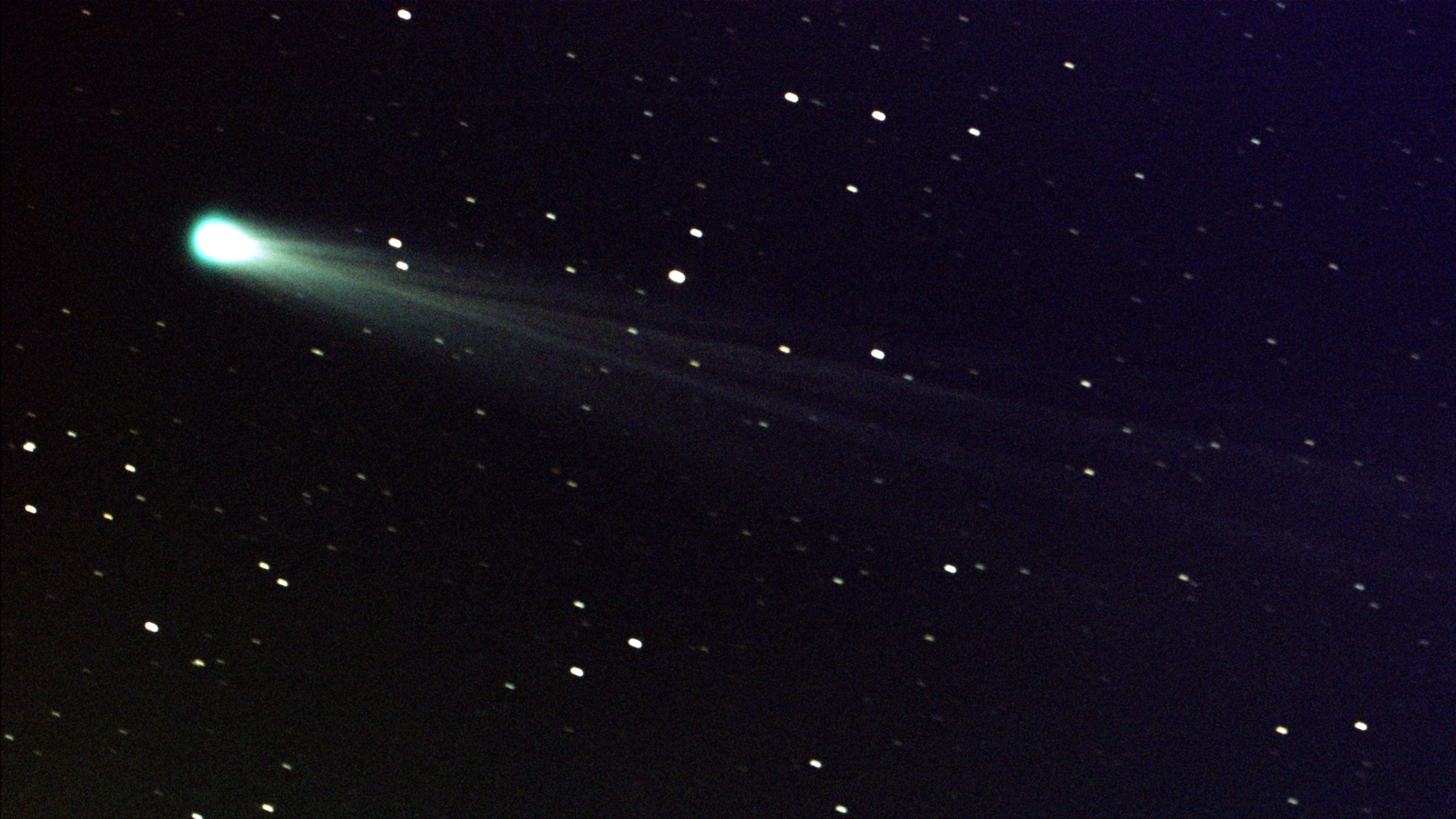
A newly discovered comet may appear as bright as a star in the night sky by fall 2024.
The comet, known as C/2023 A3 (Tsuchinshan-ATLAS), was first noted by the Asteroid Terrestrial-impact Last Alert System (ATLAS) telescope project in South Africa on Feb. 22, according to the Minor Planet Center (opens in new tab). Astronomers at the Purple Mountain Observatory in China also discovered the comet independently on Jan. 9, so both observatories are cited in the comet’s full name. Skywatchers around the world have since observed it in new and old images, with the earliest detection found in images taken by a wide-field camera on a telescope at Palomar Observatory in California on Dec. 12, 2022.
Currently, C/2023 A3 is between Saturn and Jupiter, according to EarthSky (opens in new tab). It’s traveling at a zippy 180,610 mph (290,664 km/h) and is likely to make its closest approach to Earth on Oct. 13, 2024.
Astronomers estimate that the comet orbits the sun only once every 80,660 years. This trip around, the comet will make its closest approach to the sun — known as perihelion — on Sept. 28, 2024, according to EarthSky.
All of this depends, of course, on the comet staying in one piece. Comets are loosely bound balls of ice, rock and dust, and they often break up when they approach the sun and start to heat up.
If the comet does hang together, it may become visible in amateur telescopes in June 2024, according to EarthSky, before passing between Earth and the sun on its way to perihelion. At perihelion, the comet will be low on the eastern horizon and may not be visible to many viewers on Earth; as it swings past Earth on its outbound journey into the solar system, it will appear higher in the sky. Skywatchers will likely get their best views in late October, as the comet moves through Serpens Caput (the western part of the constellation Serpens) and into the constellation Ophiuchus in the evening sky.
As viewed from Earth, the comet may be as luminous as the brightest stars in the sky during its upcoming flyby, according to EarthSky. This is brighter than the green comet C/2022 E3 that just passed by Earth in January. That comet had a brightness of around magnitude +4.6, just visible to the naked eye. The new comet may have a brightness of magnitude 0.7, potentially peaking at magnitude -5, similar to Venus at its brightest (opens in new tab). (Lower numbers mean greater brightness on the stellar magnitude scale.)
Much is yet unknown about C/2023 A3, including its size. Without more data, astronomers are still debating the comet’s chances of survival. In a message chain for astronomers (opens in new tab), University of Pennsylvania postdoctoral researcher Qicheng Zhang (opens in new tab) summed up the situation, calling C/2023 A3 the most promising comet in years to provide naked-eye views but cautioning that these hopes could be dashed. “C/2023 A3’s survival, while promising, is not guaranteed at this point,” Zhang wrote.
Stay connected with us on social media platform for instant update click here to join our Twitter, & Facebook
We are now on Telegram. Click here to join our channel (@TechiUpdate) and stay updated with the latest Technology headlines.
For all the latest For Top Stories News Click Here
